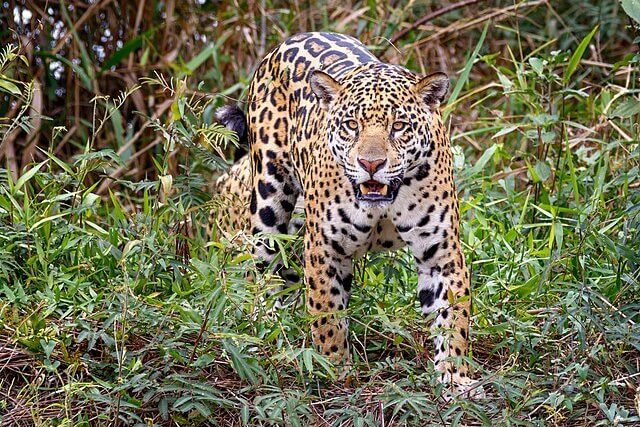
In 2010, Gerardo Ceballos and a team of researchers set out to answer a pressing question: how many jaguars remained in Mexico? They knew the numbers were low. Hunting, habitat loss, conflict with cattle ranchers and other pressures had pushed the species close to extinction.
At the time, the National Alliance for Jaguar Conservation (ANCJ) estimated there might be around 1,000 animals left. To find out, they conducted Mexico’s first nationwide jaguar census. The result was a surprise: 4,100 individuals.
“It was a great surprise, terrific news,” Ceballos said. “Obviously 4,000 means the species is still in danger of extinction, but 4,000 is a lot better than 1,000.”
Fifteen years on, the outlook has improved further. The group’s latest census, carried out in 2024, recorded 5,326 jaguars – a 30% increase since 2010.
“The fact that the country has managed to maintain and increase its population over the last 14 years is extraordinary,” Ceballos said. “For me it’s great news for the country. Mexico and the world need good news.”
The study was conducted over 90 days in 15 states, using 920 motion-triggered cameras and involving nearly 50 researchers alongside local community leaders. Covering 414,000 hectares, it was the largest mammal census ever undertaken in Mexico.
Jaguars were found across the country, with the highest concentration in the Yucatán Peninsula (1,699), followed by the south Pacific region (1,541), north-east and central Mexico (813), the north Pacific (733) and the central Pacific coast (540).
Ceballos attributes the increase to three main factors: maintaining protected areas where jaguars can roam freely; reducing conflict with cattle ranchers; and a high-profile awareness campaign that has raised the animal’s profile nationally.
“Before when we started, the jaguar was virtually unknown,” Ceballos said. “Right now it’s one of the most well-known species” in Mexico.
Even so, the jaguar remains under threat. At the current rate of population growth, it would take 25 to 30 years for the species to be considered safe from extinction in Mexico. Ceballos and his colleagues hope to cut this timeframe to around 15 years.
Serious challenges remain. Deforestation and habitat loss are ongoing problems: Mexico has lost 600,000 hectares of forest and jungle in the past six years. In the Yucatán Peninsula alone, around 60,000 hectares disappear each year, steadily shrinking jaguar territory.
“On the one hand it’s a travesty,” said Ceballos. “But on the other hand, it means that where there are still jungles and forests, the populations are growing.”
Ceballos also noted the existence of a thriving online trade in jaguar teeth, skins, claws and other body parts. He hopes to collaborate with social media platforms to shut down pages selling such products.
Infrastructure development is another concern. New highways fragment jaguar habitats and increase the risk of road fatalities, though wildlife crossings can help reduce the danger.
The species also continues to come into conflict with cattle ranchers, while the spread of diseases from domestic animals presents an additional threat.
Ceballos stressed that greater financial support from the federal government, alongside contributions from the private sector, scientists and landowners, will be essential to safeguard habitats and give the jaguar a chance to recover fully.
“We are winning a battle in a war that is being lost. But it is a very important battle,” he said. “It gives us hope that if we articulate the right policies, we can achieve great results.”
——————————————————————————
At Natural World Fund, we are passionate about restoring habitats in the UK to halt the decline in our wildlife.

